When it comes to upgrading your car audio system, one of the decisions you’ll need to make is whether or not to invest in a built-in amplifier. Built-in amplifiers or head unit amplifiers are integrated into the car stereo and are designed to power your speakers and improve overall sound quality.
However, are they any good? That’s the question we’ll be exploring in this article. We’ll take a close look at the pros and cons of built-in amplifiers in car audio systems, so you can make an informed decision.
Key Takeaways
- Built-in amplifiers are designed to power your speakers and improve overall sound quality.
- They offer convenience, space efficiency, and compatibility in car audio systems.
- Built-in amplifiers may not always match the power and customization options of external amplifiers, but they provide a suitable solution for many car audio enthusiasts.
- Consider your specific needs and budget when deciding between built-in and external amplifiers to make the best choice for your car audio setup.
Understanding Built-in Amplifiers for Car Audio
When it comes to car audio, built-in amplifiers are becoming a popular choice among car enthusiasts. These amplifiers are built directly into the car’s head unit, which means they don’t require a separate installation. They are designed to enhance the power of the car’s audio system and provide a fuller, more robust sound. In this section, we will explore the benefits and advantages of built-in amplifiers for car audio.
The Benefits of Built-In Amplifiers
One of the primary benefits of built-in amplifiers is their convenience. Since they are already built into the car’s head unit, there is no need for extra installation. This saves time and money while providing a seamless integration into the car’s audio system.
Another advantage of built-in amplifiers is their space efficiency. Since they don’t require extra components, they save valuable space in the car’s interior. This is particularly important for smaller cars where space is at a premium.
Built-in amplifiers are also designed to be compatible with most car audio components. This ensures that the amplifier will work well with your existing speakers and subwoofers, providing optimal sound quality.
The Advantages of Built-In Amplifiers
Built-in amplifiers offer several advantages over external amplifiers. One of the most significant advantages is their cost-effectiveness. Since they are built into the car’s head unit, they are more affordable than external amplifiers, which require separate installation and components.
Another advantage of built-in amplifiers is their ease of use. They are designed to be user-friendly, with straightforward controls and settings. This makes it easy to adjust the sound to your liking without any complicated setup or installation.
Finally, built-in amplifiers are also well-suited for those who don’t want to customize their car’s audio system extensively. If you’re satisfied with the factory-installed speakers and are looking for a simple upgrade, built-in amplifiers can provide a noticeable improvement in sound quality without a lot of hassle.
In the following sections, we will explore other important aspects to consider when evaluating built-in amplifiers for car audio.
Power Output of Built-in Amplifiers

Built-in amplifiers have come a long way since their introduction in car audio systems. Today, they offer a power output that is comparable to external amplifiers, making them a viable option for enhancing your car audio experience.
When evaluating the power output of built-in amplifiers, it’s important to consider their RMS power. RMS power rating refers to the continuous power that an amplifier can generate without distorting the audio signal. Most built-in amplifiers have an RMS power output ranging from 10 watts to 50 watts per channel. While this power output may be sufficient for most factory-installed car audio systems, it may not be enough for high-performance car audio enthusiasts.
If you’re looking for more power, some car manufacturers offer built-in amplifiers with higher RMS power ratings. For example, the Bose audio system in the 2021 Nissan Rogue has a built-in amplifier that delivers 225 watts of power. Similarly, the Harman Kardon audio system in the 2021 Kia K5 has a built-in amplifier that generates 320 watts of power.
It’s important to note that the power output of built-in amplifiers may also depend on other factors such as the voltage of the car battery and the quality of the wiring used in the system. To maximize the power output of your built-in amplifier, it’s recommended to upgrade your car battery and wiring.
Built-in Amplifiers vs. External Amplifiers Power Comparison
When it comes to power, external amplifiers generally have a higher RMS power output than built-in amplifiers. External amplifiers can generate power outputs ranging from 50 watts to 1000 watts per channel, providing high-performance car audio enthusiasts with the power they need to create a customized audio experience. However, external amplifiers need to be separately installed, requiring additional wiring and space in your car.
“Built-in amplifiers offer a power output that is comparable to external amplifiers, making them a viable option for enhancing your car audio experience.”
Overall, the power output of built-in amplifiers can vary depending on the car manufacturer and model. While they may not offer the same level of power as external amplifiers, built-in amplifiers can still provide an impressive audio experience. If you’re looking to upgrade your car audio system, it’s worth considering built-in amplifiers as an option.
Sound Quality of Built-in Amplifiers
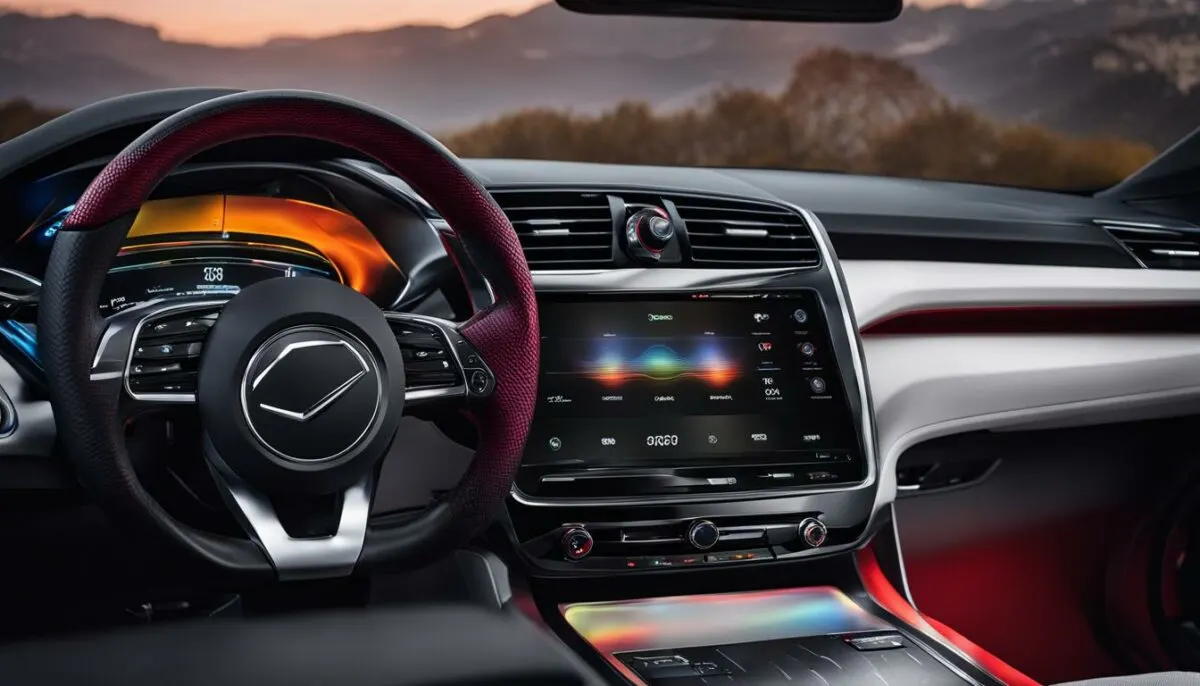
The sound quality produced by built-in amplifiers is a crucial factor to consider when deciding whether they are suitable for your car audio system. While most built-in amplifiers can deliver decent sound performance, they may not match the level of power and clarity that external amplifiers provide.
One factor that affects the sound quality of built-in amplifiers is their power output. Since they are usually integrated with the head unit and other car audio components, their power capacity may be limited compared to external amplifiers. This can result in distortion and reduced audio quality when playing music at high volumes.
Another aspect that influences sound quality is the type of audio signals that the built-in amplifier can process. Some built-in amplifiers may not support various audio sources, such as FLAC or DSD formats, resulting in lower quality sound output.
However, built-in amplifiers offer several advantages that can enhance overall sound quality. Since they are installed in the car, they are less susceptible to outside noise and interference. This can result in a cleaner and more accurate sound output.
Additionally, built-in amplifiers can often be fine-tuned to match the specific sound preferences of users. Many head units come with built-in equalizers or sound presets that allow users to customize the sound output according to their preferences. This level of customization can enhance the overall listening experience.
In summary, built-in amplifiers can deliver decent sound quality and offer several advantages that can enhance overall audio performance. However, they may not match the power and clarity of external amplifiers, depending on the specific needs and preferences of users. Consider the power output, audio signal processing capabilities, and customization options when evaluating the sound quality of built-in amplifiers for your car audio system.
Installation and Space Efficiency
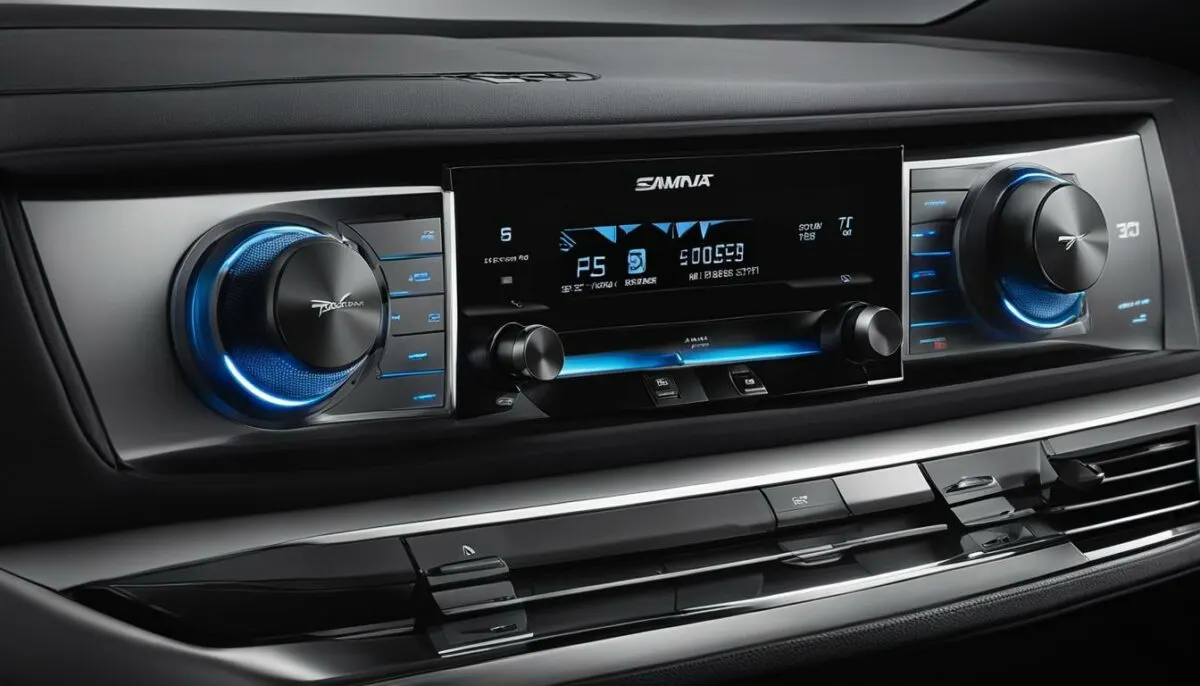
Built-in amplifiers are designed to be compact and efficient, making them an ideal choice for car audio systems. These amplifiers can be easily installed in tight spaces, providing a seamless integration into your car’s audio setup.
Unlike external amplifiers, which can take up valuable trunk space, built-in amplifiers allow you to maximize your car’s available storage. This is particularly useful for individuals with smaller cars or those who value a clutter-free interior.
Benefits of Built-In Amplifiers for Car Audio
In addition to space efficiency, built-in amplifiers offer several benefits that make them a worthwhile investment for car audio enthusiasts. These benefits include:
- Easy installation: Built-in amplifiers can be easily installed by simply plugging them into your car’s audio system. This eliminates the need for complex wiring and additional components.
- Compatibility: Built-in amplifiers are designed to work seamlessly with your car’s audio components. This ensures that you get the best sound quality possible.
- Cost-effective: Built-in amplifiers are often less expensive than external amplifiers, making them a cost-effective solution for individuals on a budget.
Overall, the space efficiency and ease of installation make built-in amplifiers a popular choice among car audio enthusiasts. They provide a practical and cost-effective solution for enhancing your car’s audio performance.
Compatibility with Car Audio Components
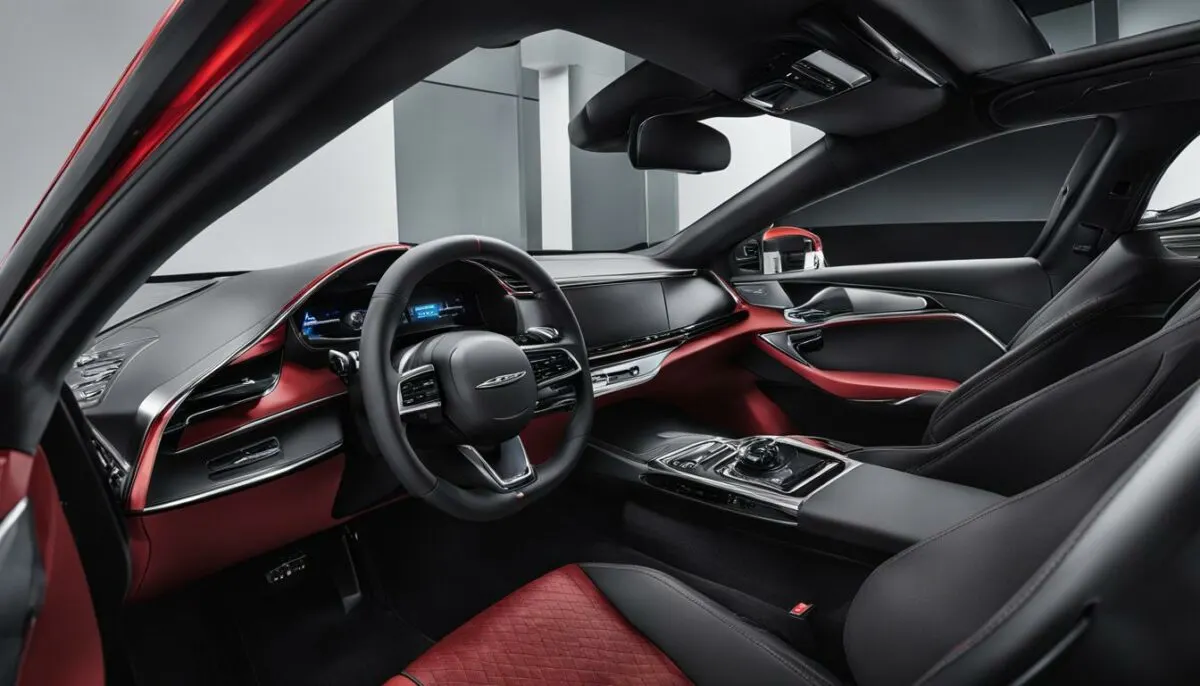
When considering a built-in amplifier for your car audio setup, it’s essential to ensure that it is compatible with your existing components. Before making a purchase, take note of the amplifier’s specifications and compare them with your car’s audio system requirements.
Some built-in amplifiers only work well with specific components, while others are more versatile and can work with a wide range of audio systems. It’s vital to find an amplifier that complements your car’s speaker configuration and provides the right amount of power output.
Factors to Consider
When evaluating the compatibility of a built-in amplifier, consider factors such as input voltage, impedance, and speaker sensitivity. Check the amplifier’s manual or website for information on these specifications and ensure they match your car’s audio system.
If you’re unsure whether a built-in amplifier is compatible with your car’s audio components, consult with a professional installer or technician. They can advise you on the best options based on your car’s make and model and provide guidance on installation and setup.
Installation and Setup
Installing a built-in amplifier is relatively straightforward, with most models requiring only minimal wiring. However, it’s crucial to follow the manufacturer’s instructions carefully and ensure that all connections are secure and proper.
If you’re not familiar with car audio installation, it’s best to seek professional help to avoid costly mistakes or damaging your car’s components. A professional installer can ensure that the amplifier is correctly set up and optimized for your car’s audio system, delivering the best sound quality possible.
Conclusion
Ensuring that a built-in amplifier is compatible with your car’s audio components is essential to achieve the best sound quality. Take note of the amplifier’s specifications, consider factors such as input voltage and impedance, and seek professional help if needed for installation and setup.
Cost Considerations
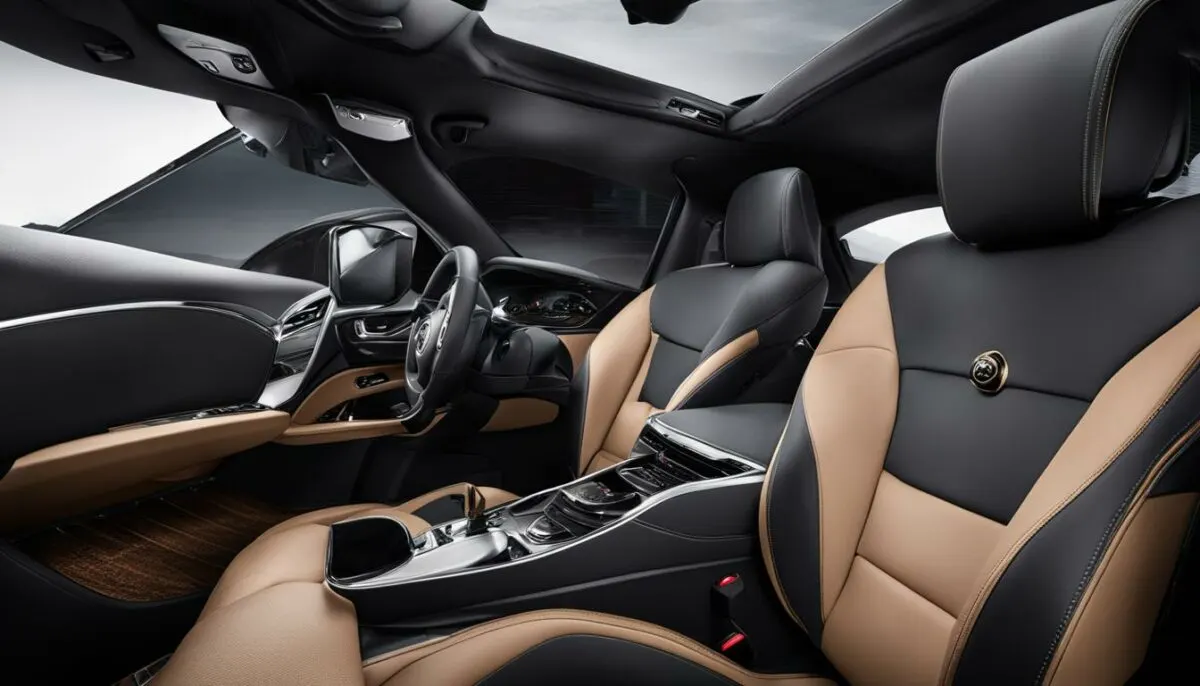
One of the primary factors when deciding between built-in and external amplifiers is cost. While built-in amplifiers may offer convenience and space efficiency, they may not always deliver the same level of power and customization options as external amplifiers.
When considering cost, it’s important to evaluate the specific needs of your car audio system and budget. Built-in amplifiers may be a more cost-effective solution for those who prioritize convenience and ease of installation. However, for those who require high power output and customization options, external amplifiers may be a better investment.
“I initially went for a built-in amplifier because of its ease of installation and space-saving capabilities, but I realized that I needed more power and control over my audio system. I ended up switching to an external amplifier, and I’m happy with the decision despite the additional cost.”
It’s important to note that while external amplifiers may require more installation effort, they provide greater flexibility and upgradability in the long run.
Tips:
- Consider your car audio needs and budget when choosing between built-in and external amplifiers.
- Shop around and compare prices to ensure you’re getting the best value for your money.
- If you opt for a built-in amplifier, consider investing in high-quality speakers to complement its performance.
Tips for Optimizing Built-in Amplifier Performance

If you’ve decided to go with a built-in amplifier for your car audio system, it’s essential to ensure that it’s performing at its best. Here are some tips for optimizing built-in amplifier performance:
1. Check your wiring
Ensure that your wiring is properly installed and doesn’t have any loose connections, as this can impact the amplifier’s performance.
2. Adjust the gain settings
The gain settings on your amplifier determine the signal level that drives your speakers. Adjusting these settings can improve the sound quality and volume levels of your car audio system, but be careful not to set them too high, as this can damage your speakers.
3. Upgrade your speakers
While built-in amplifiers have improved over the years, they may not be able to fully power high-quality speakers. Upgrading your speakers can significantly enhance the sound quality of your car audio system.
4. Optimize your crossover settings
The crossover settings determine the frequencies that are sent to your speakers. Optimizing these settings can provide better clarity and prevent distortion in your audio.
5. Minimize noise interference
Avoid placing your amplifier near any sources of electrical interference, such as the alternator or power wires. This can cause unwanted noise in your audio.
By following these tips, you can ensure that your built-in amplifier is performing at its best and providing an optimal audio experience for your car.
Built-in Amplifiers vs. External Amplifiers: A Comparison
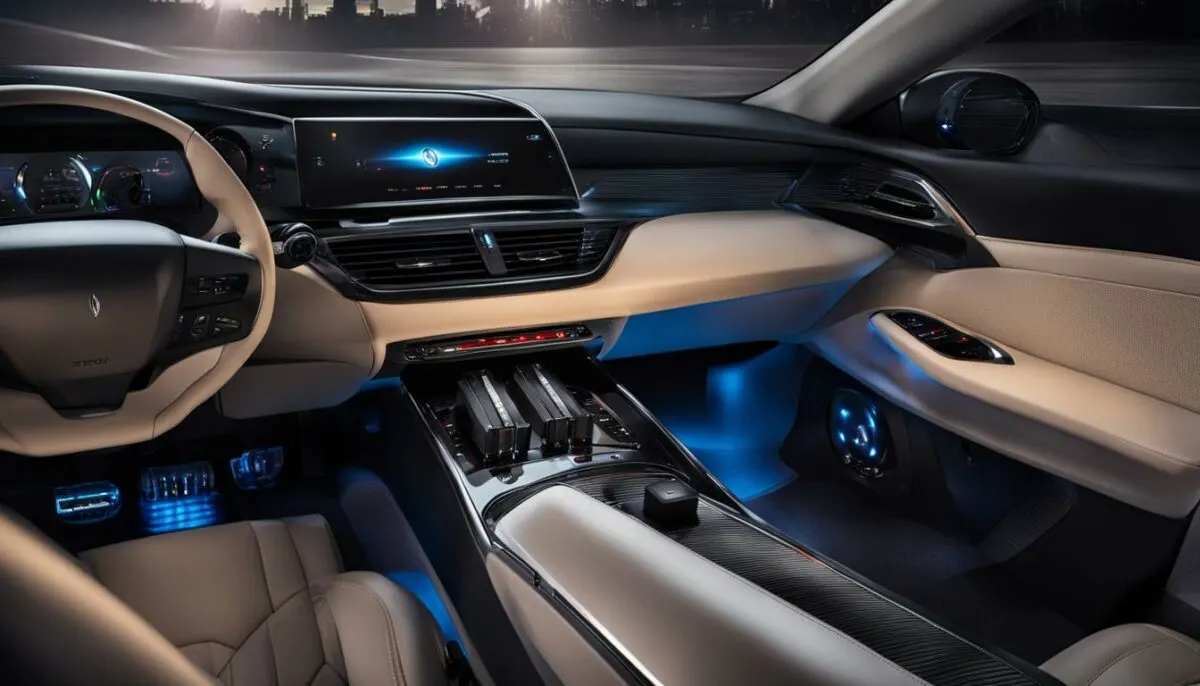
When it comes to car audio systems, choosing between built-in and external amplifiers can be a tough decision. Both have their advantages and disadvantages, and what may work for one person may not necessarily work for another. Let’s take a closer look at the differences between built-in amplifiers and external amplifiers.
Power Output
One of the main differences between built-in and external amplifiers is power output. External amplifiers typically offer higher power output than built-in amplifiers, which can translate to better sound quality and louder volume. However, built-in amplifiers are often designed to work optimally with the speakers and audio components that come with your car.
Sound Quality
The sound quality produced by built-in amplifiers has significantly improved in recent years. While external amplifiers still offer superior sound quality, built-in amplifiers can provide a good listening experience for most users. They are also more convenient to use and require less space.
Installation and Space Efficiency
Installing an external amplifier can be complicated and time-consuming, whereas a built-in amplifier is integrated into the car’s audio system, making installation much easier. Built-in amplifiers are also more space-efficient, as they are built into the head unit or behind the dashboard, saving valuable trunk space.
Compatibility with Car Audio Components
Built-in amplifiers are designed to work seamlessly with the speakers and audio components that come with your car, whereas external amplifiers may require additional components to work properly. This makes built-in amplifiers a more convenient choice for those who want a hassle-free audio system.
Cost Considerations
Built-in amplifiers are typically less expensive than external amplifiers, making them a more budget-friendly option. However, if you’re looking for high-end audio performance, an external amplifier may be worth the extra investment.
Flexibility and Upgradability
External amplifiers offer more flexibility and upgradability than built-in amplifiers. While built-in amplifiers are designed to work with the existing car audio system, external amplifiers can be tailored to fit specific audio needs and preferences.
The Verdict
So, are built-in amplifiers any good in car audio? The answer is yes, they can be a great choice, depending on your specific needs and preferences. If you’re looking for a convenient, space-efficient, and cost-effective solution, a built-in amplifier may be the way to go. However, if you’re looking for the highest possible sound quality and customization options, an external amplifier may be worth the investment. Ultimately, the choice between built-in and external amplifiers comes down to your personal audio needs and budget.
Best Built-in Amplifiers for Car Audio
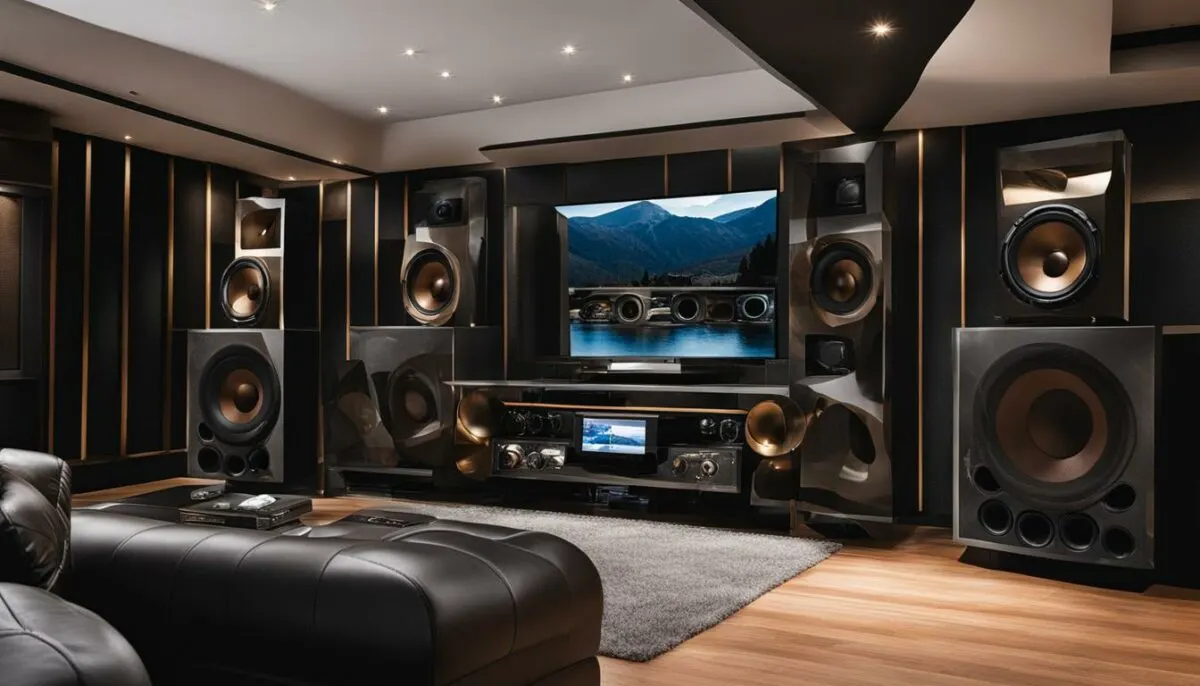
If you’re in the market for a car audio system upgrade, a built-in amplifier is a great option to consider. These amplifiers are designed to enhance your audio experience and make listening to music in your car more enjoyable. Here is a list of some of the best built-in amplifiers for car audio:
| Brand | Model | Power Output | Price |
|---|---|---|---|
| Alpine | PDX-V9 | 100 watts x 4 channels | $600 |
| JL Audio | JX400/4D | 70 watts x 4 channels | $340 |
| Kicker | 43CXA6005 | 75 watts x 4 channels | $280 |
| Rockford Fosgate | R600X5 | 75 watts x 4 channels | $390 |
These amplifiers offer excellent sound quality and compatibility with a wide range of car audio systems. They come in various sizes and power output levels, ensuring that you can find the right fit for your car and your listening preferences.
Some other notable models include the Kenwood Excelon X802, the Sony XM-GS6DSP, and the Pioneer GM-D8704.
When considering which built-in amplifier to purchase, it’s important to keep in mind your car’s compatibility, your budget, and your specific audio needs. Take your time to research and compare various models to ensure that you are making the best choice for your car audio setup.
User Reviews and Experiences

When it comes to evaluating the quality of built-in amplifiers in car audio systems, nothing beats the experience of real users. We have scoured the web for user reviews and experiences, and here’s what we found:
“I was skeptical about using a built-in amplifier for my car audio, but I decided to give it a try. To my surprise, the sound quality was amazing, and the installation was a breeze. I would highly recommend built-in amplifiers to anyone looking for an affordable, easy-to-install solution.”
– John D.
John is not alone in his positive experience with built-in amplifiers. Many users have reported similar results, citing the convenience and space-saving benefits of these amplifiers.
| User | Experience |
|---|---|
| Chris R. | “After using an external amplifier for years, I decided to switch to a built-in one for my car audio. The difference was astonishing. The sound quality was equally impressive, and I couldn’t believe how easy it was to install. I’m never going back to external amplifiers!” |
| Emily T. | “I was hesitant to switch to a built-in amplifier because of the cost. However, after doing some research, I found a reasonably priced option that fit my budget. The sound quality is excellent, and I love how compact and unobtrusive the amplifier is.” |
As these user experiences demonstrate, built-in amplifiers can provide an excellent solution for car audio enthusiasts looking for convenience, space efficiency, and compatibility.
Tips for Optimizing Built-in Amplifier Performance
Whether you’re installing a new built-in amplifier or trying to optimize an existing one, there are several tips and techniques that can help you get the most out of your car audio system.
1. Choose the Right Speakers
The speakers you pair with your built-in amplifier can have a significant impact on the overall sound quality. Make sure to choose speakers that are compatible with the amplifier’s power output and impedance. This will ensure that you get the best possible performance from your system.
2. Adjust the Settings
Most built-in amplifiers come with adjustable settings, such as gain, crossover, and equalization. Take the time to adjust these settings to optimize the sound quality for your specific music preferences and listening environment.
3. Properly Ground the Amplifier
Grounding is a crucial element to ensure optimal performance from your built-in amplifier. Improper grounding can result in noise and feedback issues, so make sure to follow the manufacturer’s instructions for grounding the amplifier.
4. Upgrade the Wiring
Upgrading the wiring in your car audio system can help reduce resistance and improve the overall sound quality. Consider using thicker, high-quality wiring for your amplifier and speaker connections.
5. Ensure Adequate Cooling
Built-in amplifiers can produce a lot of heat, which can impact performance and even damage components. Make sure to provide adequate cooling for your amplifier, such as installing a fan or ensuring proper ventilation in the installation location.
By following these tips, you can optimize the performance of your built-in amplifier and achieve the best possible sound quality from your car audio system.
Troubleshooting Common Issues with Built-in Amplifiers for Car Audio
While built-in amplifiers offer several benefits for car audio systems, they can encounter issues that may affect their performance. Here are some common issues you may face with built-in amplifiers:
- No Sound Output: If your built-in amplifier isn’t producing any sound, first check that it is receiving power and that the speakers are working properly. If those are not the root of the problem, check that all the connections are properly made.
- Distorted Sound: If the sound from your built-in amplifier is distorted, check the volume levels and ensure that the equalizer settings are adjusted properly. If distortion persists, check that the speakers are compatible with the amplifier.
- Overheating: Built-in amplifiers can overheat if they are driven too hard for extended periods. This can cause damage to the amplifier and decrease its lifespan. To prevent overheating, ensure that your amplifier is properly ventilated and not placed in an enclosed space.
If you encounter any of these issues, here are some troubleshooting techniques to help you resolve them:
- Check Connections: Ensure that all connections between the amplifier, speakers, and head unit are secure and free of any debris or corrosion.
- Adjust Equalizer Settings: Ensure that the equalizer settings are adjusted correctly for your audio system and that the levels are balanced.
- Reduce Volume: Lower the volume for extended periods of use to prevent overheating and prolong the life of the amplifier.
By following these troubleshooting tips, you can resolve common issues with built-in amplifiers and maintain the optimal performance of your car audio system.
Future Trends in Built-in Amplifiers
The future looks bright for built-in amplifiers in car audio systems. As technology continues to advance, built-in amplifiers are becoming more efficient and adaptable to enhance the audio experience.
Improved Power and Sound Quality
The power output and sound quality of built-in amplifiers are expected to improve significantly in the coming years. Manufacturers are investing in research and development to enhance these aspects of built-in amplifiers, ensuring that they deliver the same level of performance as external amplifiers.
Moreover, advancements in digital signal processing technology are making it possible for built-in amplifiers to produce clearer and more dynamic sound. Additionally, the integration of smart technology in car audio systems is allowing built-in amplifiers to analyze and optimize sound output based on different driving conditions.
Compact Design
Built-in amplifiers are already known for their compact design, but manufacturers are continually making them even smaller and more space-efficient. This trend is particularly important as cars become more compact and space is becoming increasingly limited.
Future built-in amplifiers are expected to be even more efficient in their design, ensuring that they take up the least amount of space possible while still delivering high-quality sound.
Integration with AI Assistants
As artificial intelligence technology becomes more advanced, built-in amplifiers are expected to become compatible with AI assistants like Amazon’s Alexa and Google Assistant. This development will allow drivers to control their car audio systems entirely hands-free and voice-controlled, enhancing the driving experience.
Wireless Connectivity
Wireless connectivity is an essential feature of modern car audio systems, and built-in amplifiers are no exception. Future built-in amplifiers are expected to be more flexible in terms of connectivity, allowing drivers to connect their mobile devices, laptops, and other audio sources wirelessly.
The use of Bluetooth technology is expected to become more widespread, allowing drivers to stream music from their smartphones directly to their car audio system without the need for a wired connection.
Conclusion
From improved power and sound quality to compact design and wireless connectivity, future built-in amplifiers offer exciting possibilities for car audio enthusiasts. The integration of smart technology and AI assistants is set to revolutionize the way we interact with car audio systems, providing a seamless and intuitive experience.
Conclusion
After exploring the pros and cons of built-in amplifiers in car audio systems, it’s clear that these amplifiers offer several benefits to car audio enthusiasts. Built-in amplifiers provide convenience, space efficiency, and compatibility with car audio components. While they may not match the power and customization options of external amplifiers, they offer a suitable solution for many car audio setups.
When deciding between built-in and external amplifiers, it’s important to consider your specific needs and budget. If you’re looking for a cost-effective and easy-to-install option, built-in amplifiers are worth considering. On the other hand, if you require high power output and customization options, external amplifiers may be a better choice.
Looking Forward
The future of built-in amplifiers in car audio systems is promising, with advancements in technology leading to improved performance and compatibility. Car audio enthusiasts can expect to see more efficient and powerful built-in amplifiers in the market, providing an even better listening experience.
For now, by following our tips for optimization and troubleshooting, you can ensure the best performance from your built-in amplifier. Keep in mind that hearing from other users through user reviews and experiences can also provide valuable insights.
No matter which option you choose, we hope this article has helped you make an informed decision on whether built-in amplifiers are right for your car audio setup.
FAQ
Are built-in amplifiers any good in car audio?
Built-in amplifiers can provide a decent audio experience in car audio systems. While they may not have the same power and customization options as external amplifiers, they offer convenience and space efficiency.
What are the benefits of built-in amplifiers for car audio?
Built-in amplifiers are easy to install and save valuable space in your car. They also integrate seamlessly with other car audio components, ensuring compatibility and a streamlined setup.
How does the power output of built-in amplifiers compare to external amplifiers?
Built-in amplifiers typically have lower power output compared to external amplifiers. However, they can still provide sufficient power for most car audio systems and deliver quality sound.
Can built-in amplifiers deliver the same level of sound quality as external amplifiers?
While built-in amplifiers may not match the sound quality of high-end external amplifiers, they can still produce good audio performance. The sound quality may vary depending on the specific amplifier and car audio setup.
How easy is the installation of built-in amplifiers and do they save space?
Built-in amplifiers are designed for easy installation and can save valuable space in your car. They are typically built into the car’s head unit or dashboard, eliminating the need for external components.
Are built-in amplifiers compatible with all car audio components?
It is essential to ensure compatibility between built-in amplifiers and other car audio components. Some built-in amplifiers may have limitations or require specific connections, so it’s important to check compatibility before purchasing.
What are the cost considerations when choosing built-in amplifiers?
Built-in amplifiers are generally more affordable compared to external amplifiers. However, the cost may vary depending on the specific brand, features, and power output. It’s important to consider your budget and desired audio quality when making a choice.
Do built-in amplifiers offer flexibility and upgradability?
Built-in amplifiers may have limitations when it comes to flexibility and upgradability. Unlike external amplifiers, they are integrated into the car’s head unit, making upgrades or modifications more challenging. However, some models may still provide options for customization.
How do built-in amplifiers compare to external amplifiers?
Built-in amplifiers offer convenience and space efficiency, while external amplifiers provide more power and customization options. The best choice depends on your specific needs, budget, and desired audio performance.
What are some of the best built-in amplifiers for car audio?
There are several top-rated built-in amplifiers available in the market, offering excellent sound quality and compatibility. It’s best to research and read user reviews to find the option that fits your requirements and preferences.
What do users say about built-in amplifiers for car audio?
User reviews and experiences can provide valuable insights into the performance of built-in amplifiers. Hearing from other car audio enthusiasts can help you make an informed decision and understand the pros and cons of these amplifiers.
How can I optimize the performance of a built-in amplifier?
To optimize the performance of your built-in amplifier, ensure proper installation and wiring. Additionally, adjust the settings and equalization according to your preferences. Experimenting with different audio sources and components can also help improve the overall performance.
What are some common issues with built-in amplifiers and how can I troubleshoot them?
Common issues with built-in amplifiers may include distortion, overheating, or poor sound quality. Troubleshooting techniques include checking connections, adjusting settings, and ensuring proper ventilation. If the issue persists, consulting a professional may be necessary.
What are the future trends in built-in amplifiers for car audio?
The car audio industry is constantly evolving, and future trends in built-in amplifiers focus on improving sound quality, efficiency, and integration with other technologies. Stay updated with the latest developments to make informed choices for your car audio system.